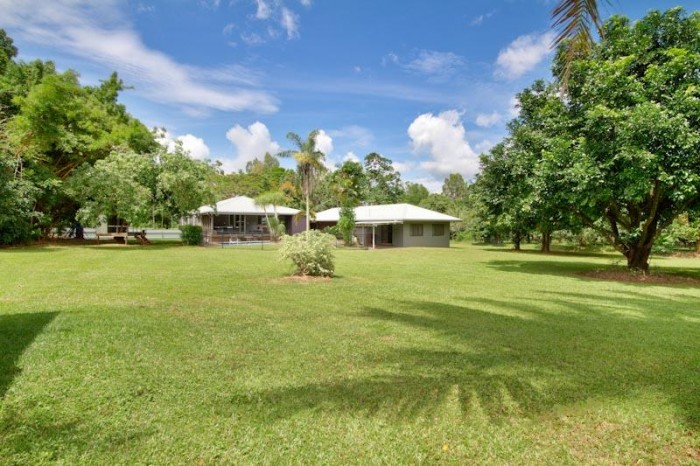
I hear people living on acreage saying that they only sell a little of their produce at markets just to cover costs and of course not declare it in their tax return because it is really just a hobby. They are concerned if they use the property to produce income in any way they will lose their main residence exemption.
If your property is more than 2 hectares then you would be much better off for CGT purposes to use the property to produce income in a business (not just to produce rent). It doesn’t have to be a business that produces its product from the land. The land can simply be used in the business as a place of business. Consider where equipment is stored or trucks parked. The idea is to make part of the property an active asset of the business.
The main residence exemption only covers the land under the home and curtilage to the total of 2 hectares. The rest of the property is exposed to CGT and if all it is being used for is personal then all you will be entitled to is the 50% CGT discount. Alternatively, if you qualify for the small business concessions you would get a further 50% active asset discount with the remaining 25% of the gain qualifying for the retirement exemption or rollover relief. If you also retire at the time of the sale and you have held the property for over 15 years and used it in a business for at least 7 ½ years then no tax applies to the capital gain at all!
The catch is, to qualify as a small business your turnover has to be under $2 million or business assets need to be less than $6 million. The business does not have to be in your name as long as it is in an associate’s name.
If the property has been your family home for decades and the area has now been zoned for residential development the capital gain could be in the millions. Reducing the tax to zero could save you hundreds of thousands of dollars. So read up and start planning now.
The property needs to be used in a business associated with you for half the time you own it or 7 ½ years, whichever is the lesser time.
Other than the land immediately under the part of the building that is considered your main residence, the rest of the 2 hectares does not have to be adjoining. As long as it has not been used for income producing purposes, you can pick and choose by the square metre if you wish.
When it comes to calculating the capital gain you will need to get a valuer to apportion the original price you paid for the property and the price you sell the property for. You also increase the price you paid by any costs associated with the property since purchase. Technically, you can even include the cost of slashing if you purchased the property after 20th August, 1991 and have not claimed that cost already.
The parts of the property that you choose to cover with your main residence exemption would be areas that you couldn’t say were used in a business but had gone up the most in value. For example, when you bought the place there was 1 hectare that was next to a heavily treed state forest but now that has been harvested the land has spectacular sea views. The valuer will be apportioning a similar cost base to that hectare as the others but a higher portion of the selling price. This means a higher gain so mark that off as main residence area.
On the other side of the coin there may be part of the property that is flood prone, an easement, etc. The valuer may consider this area to be worthless at the time you purchased the property and worthless at the time you sell. If you have to expose some hectares to CGT these are the ones to use as there is no capital gain.
An area of the property may have a higher cost base because you spent a fortune on flash stables that have now, decades later, have fallen to ruin. The stables are still included in the cost base but that area would receive a similar share of the selling price as the other paddocks because there is no longer a benefit in the stables. Accordingly, the capital gain of this area will be less than others so expose it to CGT.
Assuming there is no area on the property where you can justify a capital loss then you want to cover as much of the property as possible with either the main residence exemption or the small business concessions. The more of the traditional house yard area that you can say is used in a small business the more main residence exemption you will have available to use elsewhere. Obviously a lot of areas will be used for both purposes. For example if you are operating a business in the shed out the back, the drive way and parking area will be used for both private and business purposes. A close look at the relevant section certainly does not require that the area that qualifies for the small business concessions be use 100% in the business:
Section 152-40(1)(a) you own the asset and it is used, or held ready for use, in the course of
carrying on a *business
This point is further reinforced by PBR 1011663179716. However,note that Private Binding Rulings (PBR) can only be relied on by the person who applied for the ruling. It is recommended you get your own quoting the following sentence from PBR 1011663179716:
The definition of active asset does not require exclusive use of the asset for business purposes.
Here is another nifty trick. If you inherit a property, the active asset use test only applies to the period since you inherited the property. Even if it was a post 1985 asset to the deceased, you would have inherited quite a large capital gain.
Now in order to keep this article readable I have not included all the fine print and traps. This is a heads up. Please get advice to make sure you are doing it correctly. There is just too much tax and time at risk to miss out on account of a technicality. It is something you need to start now, not wait until you are ready to sell.
One thing is for sure, if your property is on more than 2 hectares it will not be fully protected by your main residence exemption. Accordingly, you are required to keep records for CGT purposes. If you do it well you will significantly reduce your CGT bill. To help you minimise your CGT by keeping track of all possible deductions in the most effective way I have designed a set of spreadsheets with detailed instructions.
- Access the spreadsheets here: https://www.bantacs.com.au/shop-2/cgt-record-keeping-and-tricks-for-homes-on-more-than-2-hectares/
 Julia's Blog
Julia's Blog